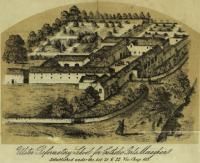‘Christ did not come down from the cross’ was the late Pope John Paul II’s response when questions were raised about his failing health and painfully obvious public suffering in the latter years of his pontificate. So how do we explain the surprise resignation announcement of his successor, Benedict XVI, in contravention of papal tradition (some exceptional medieval cases notwithstanding)? The ‘rules were made to be broken’ adage seems to apply—with the evolution of medical science people are living longer, but not necessarily with their full mental or physical faculties. But the same argument could apply to the evolution of social attitudes and the Church’s line on homosexuality, clerical celibacy and women priests.
Volume 21
Breaking the silence on abortion:the 1983 referendum campaign

The passing of the 1967 Abortion Act that legalised abortion in the United Kingdom (excluding Northern Ireland) was a source of controversy in the Irish Republic, where access to contraception was illegal. After 1967, increasing numbers of Irish women availed of access to abortion services in Britain while the debate about women’s right to control their own fertility carried on against a background of difficult legal cases. In 1981 the Pro-Life Amendment Campaign (PLAC) secured pre-election promises from both Fianna Fáil and Fine Gael to amend the constitution to ensure that abortion could not be introduced either by legislation or by the courts. Many Catholic bishops and priests spoke out in favour of the amendment, but all the other mainstream churches opposed it. Fianna Fáil backed the proposal, Fine Gael was divided, and Labour and the Workers’ Party and liberal forces generally opposed it, although all stressed that they were not advocating the legalisation of abortion.
Claims of ‘foreign funding’ of anti-amendment campaign
There were claims by some pro-amendment activists that the anti-amendment campaigners were being funded by foreign forces determined to undermine Ireland’s status as the protector of traditional Christian values. Far from this being the case, Andrew remembered how tight the budgets were and the lack of resources available to the activists:
No more chains!
 John was involved in the publication of a pamphlet, No more chains! Why you should oppose the constitutional ban on abortion, knowing that what they were doing was in contravention of the law, specifically the law on censorship that actually prohibited advocacy on the issue.
John was involved in the publication of a pamphlet, No more chains! Why you should oppose the constitutional ban on abortion, knowing that what they were doing was in contravention of the law, specifically the law on censorship that actually prohibited advocacy on the issue.
Most vicious and refractory girls’the reformatories at Ballinasloe and Monaghan

On 2 July 1883, fifteen-year-old Bridget Carroll arrived at the Spark’s Lake reformatory in Monaghan to serve the remainder of a sentence that had been imposed on her four years earlier. She had been tried at Loughrea petty sessions in September 1879 on a charge that she ‘Did threaten to stab Anne Flynn’. She was found guilty and sentenced to a short term of imprisonment, followed by five years in a reformatory in Ballinasloe. This reformatory, which had been her home for nearly four years, was now closing, and she had made the long journey to Monaghan to serve out her sentence under the supervision of the St Louis sisters.


